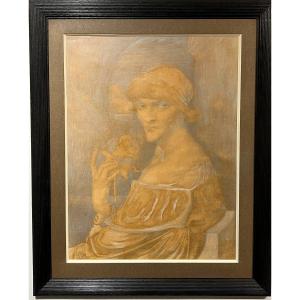Androgyne à la rose, 1911
Mixed technique on cardboard
64 x 49.5 cm
80 x 65 cm in its frame
Monogram and dated in Roman numerals at the top right
Salomon-Léon Sarluis was born in The Hague in an antique dealer father and a German mother: the family belongs to the city's Jewish community. After giving up a commercial career, he took the name "Leonardo" in homage to Vinci and joined the Royal Academy of Fine Arts in The Hague from 1891 to 1893. He moved to Paris in 1894. In February 1896, Armand Point introduces him to the Belgian avant-garde: the young man seduces with his youthful and reborn beauty. In 1896, Joséphin Peladan and Élémir Bourges allowed him to exhibit two paintings at the fifth Salon de la Rose-Croix Esthetique. Influenced by Point, but also by the Pre-Raphaelites, the young painter approaches mythological and biblical subjects in a style that is both disturbing and sensual, and is similar to the symbolist school. He soon seduced all of Paris: Puvis de Chavannes, Oscar Wilde, Jean Lorrain, Émile Verhaeren, Rachilde, Catulle Mendès, Camille Mauclair… Even Paul Léautaud ended up finding him handsome. In Days and Nights, Alfred Jarry describes him as Roissoy. The homosexual magazine Akademos published one of his drawings, titled Inquiétude, in its January 1909 issue. exhibit in Paris and which he ended up presenting in London in 1928 at the Grafton Galleries. Persecuted during the Second World War, he was forced to leave his studio. He ended his life on April 20, 1949, forgotten by all.




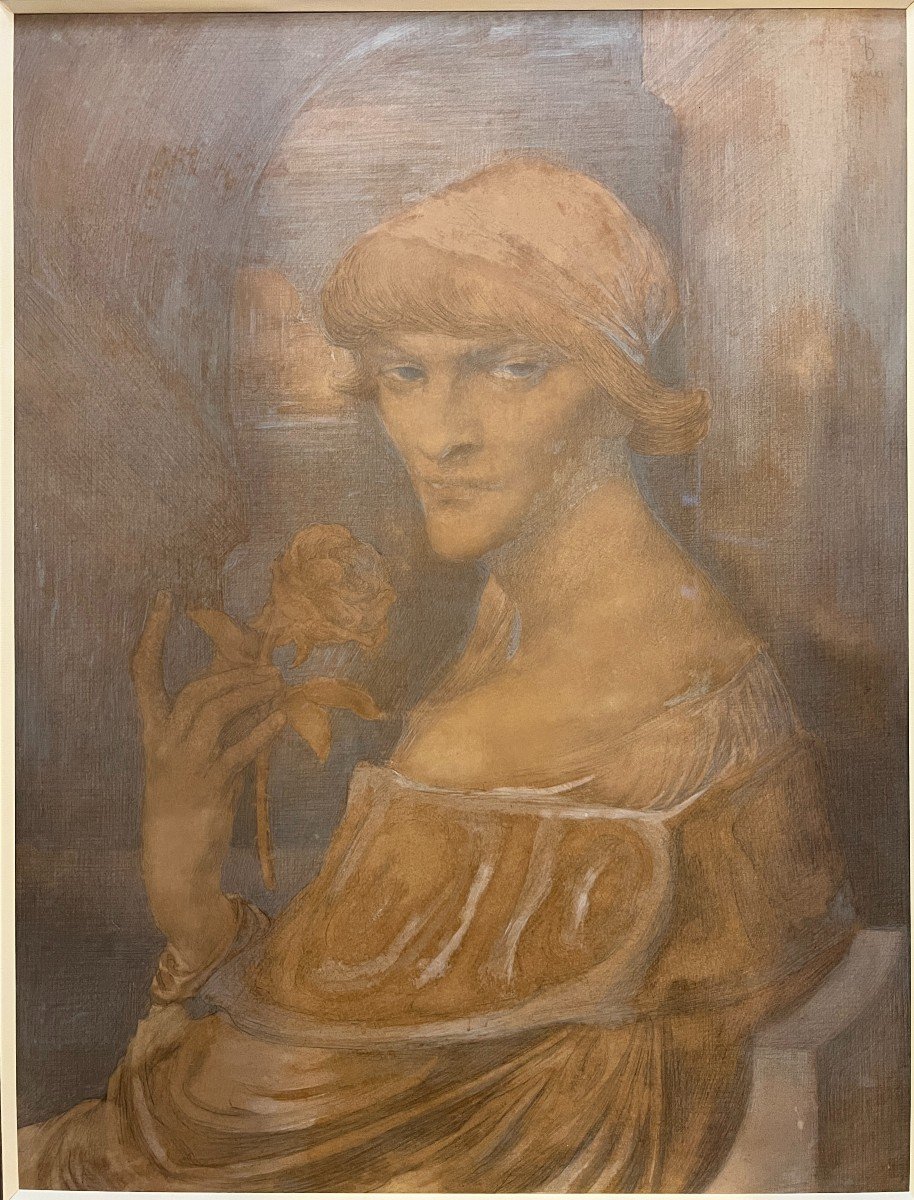
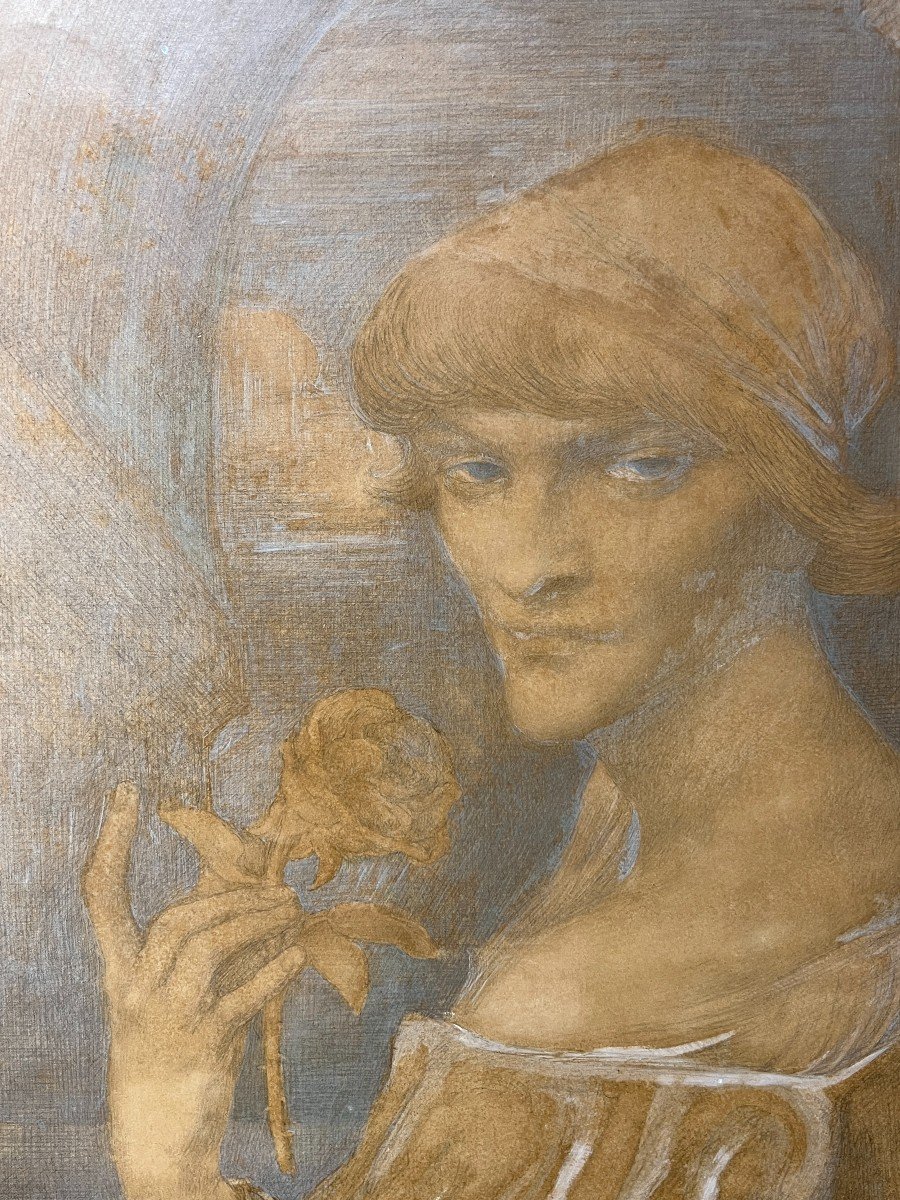
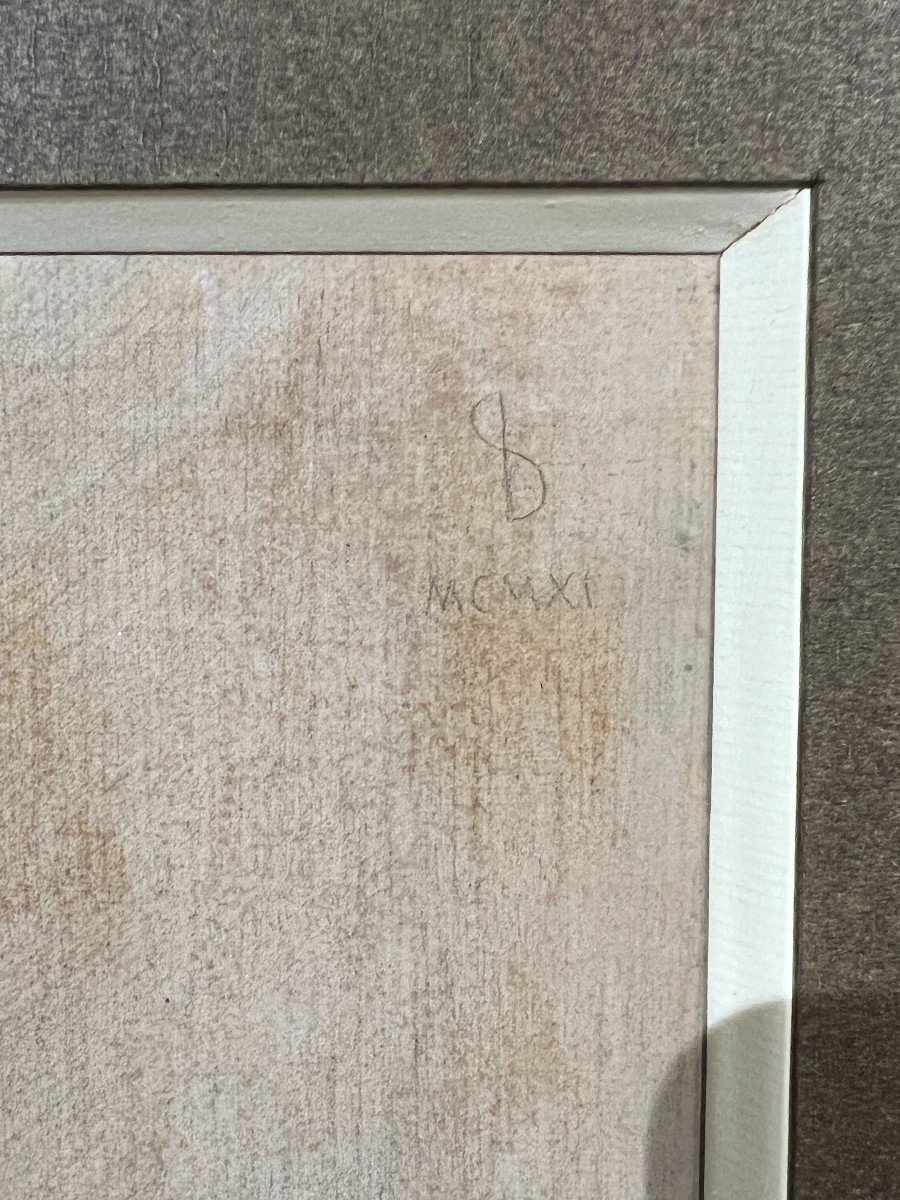
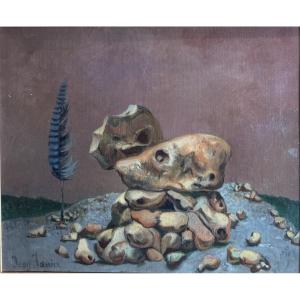


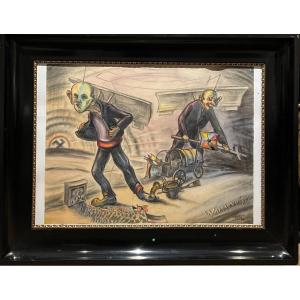
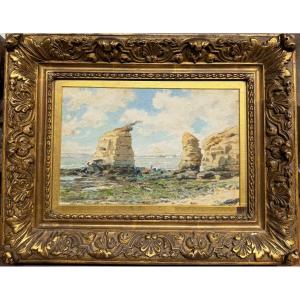
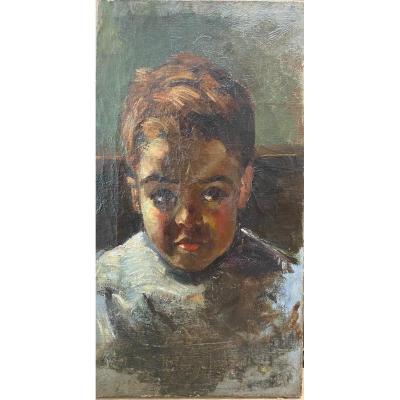

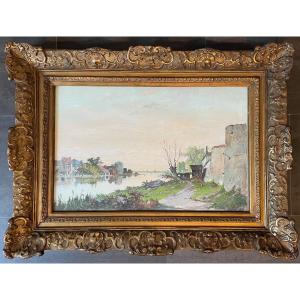

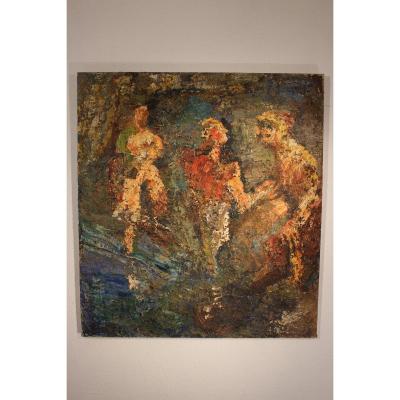





 Le Magazine de PROANTIC
Le Magazine de PROANTIC TRÉSORS Magazine
TRÉSORS Magazine Rivista Artiquariato
Rivista Artiquariato
